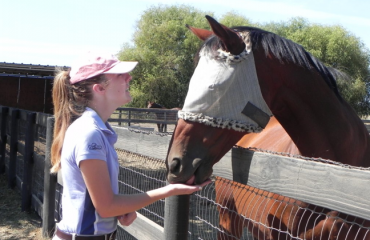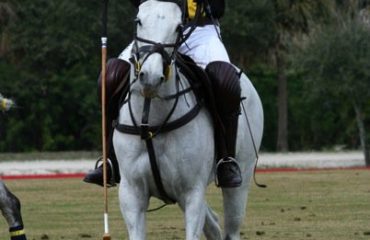By George Williams
Try riding a small circle in 12 strides. The chances are that you will find yourself riding a volte. You could do this in trot or the canter. While perhaps you ride them in practice because you’re required to do them in tests, are they part of your training repertoire? Sadly, from what I’ve seen they all too often are not. While of course you may not want to do thousands of them to protect your horse’s legs, they are an excellent movement for the development of your horse.
You may wonder, why voltes? What’s their purpose? They’re difficult to ride, and the judges can be nitpicky about how they are ridden. In doing a quick perusal of dressage tests, I found that circles or half circles of 10 meters at the trot or canter are required in at least eight of the 12 new First- through Fourth-Level tests. This doesn’t include the FEI tests where they are required at the Junior, Young Rider, PSG and I-1 level, and in other FEI tests as well. That fact alone should motivate you to master the geometric figure. To be successful, it is crucial to know where the quarter points are on your volte. For fun, could you be at three, six, nine and 12 strides as you hit each quarter point? Once your volte is round, then work to have the horse conform to the line of the figure.
In the past, when the description of the movements was still in the FEI rule book, it described the volte as a circle of six, eight or 10 meters in diameter. In the 2007 FEI “Dressage Handbook – Guidelines for Judging,” it says that for a 10, “The volte is executed in the correct size and in the required pace. The rider starts and finishes the volte at the required marker. The volte is absolutely round and the horse is moving on one track.” It does not mention bend, however, it’s nearly impossible to ride an eight-meter circle with the horse on one track without the correct bend throughout the volte. On the other hand, for a 6 it says, “The volte is large/small. It is not shown in a true collected or working pace. The rider starts/ends the volte late/early. The volte is more oval than round. For a moment the horse shows escaping shoulders or quarters moving a little on two tracks.” It’s important to understand that “escaping shoulders or quarters” is a serious fault. It’s first mentioned under the suggested 6 and becomes more prominent as it moves down the scale to a 1. There is good reason for this, as the value of the volte as a training exercise is lost if the horse does not remain aligned throughout the volte.
One of the details that separates the volte from 20-meter circles and even 15-meter circles is the increased emphasis on turning. Therefore, I put the volte in the category of turning exercises. Along with other turning exercises such as shoulder-ins, turns on the haunches and simple right-angle turns, they’re a terrific movement for developing and improving collection. To understand the value of turning exercises is to appreciate the importance of the volte.
In turning exercises, the horse’s head and neck look in the direction of the line; in other words, at the next destination. On a volte, that’s the next quarter point. Their shoulders then turn on that line, helping you gain control of the outside shoulder. If the bend throughout the body is correct, the inside hind leg then steps further under the horse to what is frequently referred to as under their center of gravity—think under the rider’s seat. You must keep the outside shoulder in line through the continuity of a turn to effectively increase the articulation of the inside hind leg. When you don’t have control of the shoulder, the energy created by the inside hind stepping under escapes to the outside and therefore the benefits are lost.
How and where the outside hind steps is just as important as the inside hind to riding a successful volte. This is true in all turning exercises: The outside hind needs to step up and under—think like the feeling of a travers, so that it narrows the base of the haunches. Narrowing the base behind strengthens the hindquarters, produces more spring or elasticity in the step, and helps to produce greater pushing and carrying power of the hind legs. Those last two qualities, along with an increased height of step created by greater flexion of the hip, stifle and hocks, allow for the adjustability of step and stride needed for movements requiring high levels of collection such as piaffe, passage, pirouettes and even extended trots.
Caption:
George discusses the importance of mastering the volte at the trot and canter.
Photo by Kristen Scott, www.sunsoarphotography.com













